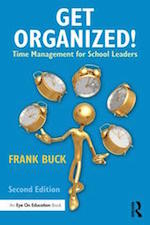In the New School Year: Simplify, Unify, Multiply

A new school year brings excitement and hope. Summer conferences, professional reading, and well-deserved rejuvenation spark big ideas. We can’t wait to set them in motion. But if we are not careful, we bite off more summer ideas than we can chew. The small things in the day-to-day routine accumulate. Soon, we count the days to the next break.
As you plan for the year ahead, be good to yourself. In this article, I offer three strategies to help you and your students in the journey.
Simplify
You’ve been told you need to be on Twitter, because that’s where the smart educators are. You’ve been told your class needs a Facebook page because that’s where the parents are. Likewise, you need a presence on Instagram because that’s where the kids are. Moms are on Pinterest, so perhaps lots of educational pins would be good.
Oh – and don’t forget about Remind and Bloomz. Don’t just announce an assignment. Remind students and their parents – daily. And for those parents who aren’t tech-savvy, you need to think about sending a paper newsletter. Preferably translate it into at least two languages.
You get the picture. The end result is a two-pronged disaster, and we do it to ourselves. We spend time trying to communicate to everyone on every platform in an attempt to rise above the noise. In the process, we become the noise.
I hear teachers talk about the time they spend trying to be present everywhere. I also hear parents talk about being overwhelmed from fragmented pieces of information. They never know which feed is going to hold something important.
Pick one tool and use it well.

My favorite tool continues to be a blog. Add a “follow by email” widget in the sidebar, and you’re done. When a visitor adds their email address, every new post is delivered to their inbox.
Talk to any digital content marketer, the people whose livelihoods depend on effective digital communication. Without exception, they say reaching a person’s email inbox is the best way to deliver a message.
You may have heard a social media guru (or your teenager) tell you “blogging is dead.” Far from it. The blog site you are reading right now reaches many thousands on a regular basis.
You could create a fully functioning blog on Blogger in 10 minutes or less. To get started, I invite you to visit a blog I created to serve as an example of what’s not only possible, but easy. It’s called “Your Own Blog in 10 Minutes or Less.” (If you want to learn more about the various blogging options educators are choosing – and why – read this survey-based article at Edublogger.)
What do you use to communicate to parents and students? Let us know in the comments.
Unify
Should students fold their papers like a hot dog? Or should they fold them like a hamburger? Should they head their papers with name, period and date or name, date and period?
It doesn’t matter. What does matter is that the procedure is the same in every class they attend. Middle-level students rotate among a team of teachers, many for the first time in their lives. If the team can come to an agreement on small procedural items, everybody wins.

Is the procedure going to have students in the room when the bell sounds, or must they also be in their seats with their assignments on the desk and smiles on their faces? When it varies from class to class, expect friction. When it is consistent, life gets easier for everyone.
Friday is a great day to give a test. It’s a terrible day for a student to have five tests. Many schools adopt a test-day schedule. Monday is test day for Math, Tuesday for Science, etc. Decide the testing schedule as a team. Rotate it with each grading period if you like. The point is this – that one simple decision means no student faces an evening of preparing for three tests the following day.
What about mobile phones in the classroom? I remember the day when they were banned by state law. Now they are pretty much ubiquitous. Do they stay in the backpack or are they placed face-down on the desk? How do you prevent them from being used to cheat on tests? How do you keep the trip to the restroom during class from turning into the opportunity to phone a friend? Don’t be the lone wolf. Think through these things as a team and present a united policy front.
What are some of the small procedures you have that make your classroom operate effectively? Let us know in the comments.
Multiply
If you want to understand delegation, visit the classroom of a master 1st grade teacher five minutes before afternoon dismissal. She says the magic word and 20 students scatter. Two straighten the reading area. One waters the plants. One changes the calendar. Three more assemble materials for tomorrow’s Morning Meeting. One young person feeds the classroom gerbil.
Everybody has a job. That means the teacher spends less time on little tasks and more time on things that require a degree in education.
If you have read Ron Clark’s The Essential 55, you may remember Rule #17. “When we are in transition from one subject to another, the change will be swift, quiet, and orderly.”
In the book, Clark explains how he delegated each step in setting up the overhead projector. Closing the blinds, turning off the lights, closing the door, pulling down the screen, wheeling the projector into place, and plugging it into the wall were jobs handled by different students. He could then simply say, “Let me show you that on the overhead projector” and the whole process was set into motion and completed in less time than it took him to pick up his overhead pen.
When I talk about delegation during my workshops, there is one slide where everyone in the room snaps a picture. I was invited back to the elementary school where I had attended 1st grade exactly 50 years before. In the hallway was a bulletin board with job descriptions and pockets. Inside those pockets were applications where young students were applying for jobs within the school. Brilliant.
Everybody needs a place to belong. For many of the students who walk through our doors, school is their best shot at finding that place. What are the small annoyances in your daily routine that take time away from what you do best? Could they be turned into opportunities for students to have a stake in how the classroom runs?
What are the “jobs” you have delegated to students? How has that given you more time for the craft of teaching? Let us know in the comments.
Be good to yourself
American author Alvin Toffler reminds us, “You’ve got to think about big things while you’re doing small things, so that all the small things go in the right direction.” As the new year begins to roll out, remember to be good to yourself.
Simplify your work so that you do half as much twice as well. Unify your procedures across your team so they become second-nature to the students. Multiply your effectiveness by letting others share the load. When the final bell sounds next spring, perhaps you’ll look on this year as your best year.
__________________







































Wonderful back to school words of wisdom. My favorite tidbit of info reminded me of my “adopted areas” process. In only 2 minutes, this routine resulted in 20+ jobs being done for the next day. Kids had ownership and pride in “their room” and job.
Thanks for the feedback. So true…when everyone has a job everyone feels a part of the classroom. Whether it’s 1st grade or middle school or the world of work, we need to know that our contribution makes a difference.